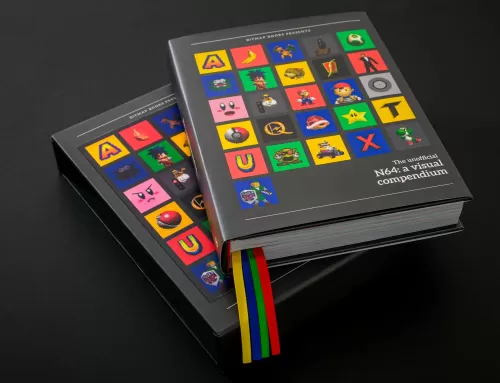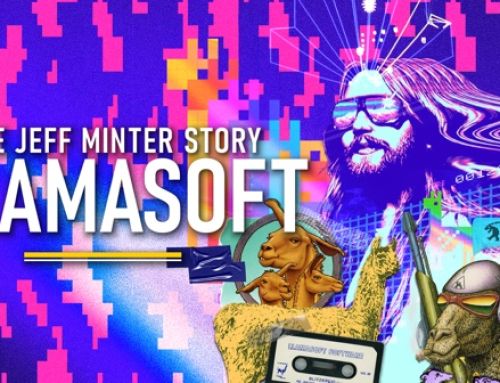Grab your blue shell and some friends as we tackle the second round of the popular kart racer – in 3D this time!

There are so many games to choose from these days and different platforms that it can be overwhelming deciding where to start. And, sometimes you simply want to delve into an old favourite or a series you have heard great things about but never played. Nothing wrong with it, no judging here. In fact, I am definitely guilty of spending many hours playing the old timers as much as the shiny new stuff. So, in this particular section, I will take the time to play a game of the past which could range from the NES era all the way to the Xbox 360/PS3 generation and share my thoughts with a rating out of five.

The Nintendo 64 sequel to the highly successful Super Mario Kart on the Super Nintendo (SNES) was one of the pillars of couch multiplayer gaming on the machine and, although lacking features, still provides brilliant entertainment.
Admittedly, there is a tremendous nostalgia buzz for me on replaying this game, from the opening spinning gold Nintendo logo followed by Charles Martinet’s booming Mario voice ‘WELCOME TO MAAARRRIO KART!’
Released in the UK in 1997 (a whole six months behind Japan’s release in 1996) it was one of the earlier games for the platform and was highly anticipated, following four years from it’s incredibly popular predecessor. The series has continued through every console generation with at least one entry on each Nintendo platform. This was the first of the three dimensional ones and feels like the real beginning of what we now know as Mario Kart.

The original line-up returns with two exceptions; Donkey Kong replaced DK Junior and Mario’s alter ego Wario instead of Koopa Troopa. Both substitutes worked better and Rare even supplied the model for DK based on their renders from the DK Country series on the SNES.
The visuals are plenty colourful and the environments and menus were terrific for their time. Interestingly, Nintendo couldn’t run the game with the character models in full 3D so they cleverly used pre-rendered sprites shot from different angles to simulate a 3D effect and for the most part it works.
As for the sound design, the characters all have voice samples when they are chosen, fire weapons, get hit, win and lose races and most are hilarious, cute or a combination of the two (for trivia’s sake, this was the first game in which Luigi was ever voiced). Toad might be the only exception in that he literally sounds like a toddler and it’s on the cute-overload. The soundtrack by Kenta Nagata is crucially catchy and has a different feel to the rest of the series (some synthesised smooth jazz as menu music, for instance) but is fantastic.
Now, it should be stated that this game really should be played as a multiplayer game. Sure, the single-player mode is fine with some madcap fun to be had but it is, admittedly, a little shallow. The four cups are available straight away (Mushroom, Flower, Star and Special) and the only unlockable is an Extra CC which is a mirror mode. There are no secrets or extra maps, no unlockable characters. Nothing. Oh, aside from an updated title screen. That’s it. This lack of incentive to go back once you have unlocked the Gold cups on each difficulty is disappointing, especially considering how easy the game can be.

However, the actual tracks are some of the series’ best with great variety and greater verticality than the previous game with Royal Raceway, Bowser Castle and Sherbet Land being particular favourites. Across the 16 circuits Mario and friends race across deserts, city motorways, haunted boardwalks, snowy lands and the psychedelic Rainbow Road makes a trippy three-dimensional reappearance (although a little on the long side).
The item system also returned with a few minor changes such as the ability to have multiples of red and green shells (handily circulating your kart as defensive shields) multiple mushroom boosts, bananas and the introduction of the now infamous Blue Shells. These seek out the leader but hit anyone that gets in their way and are a fun new addition to add tension. The feather from the SNES game was dropped as well as the coin collecting to increase speed and, let’s face it, weren’t missed. The ability to retry if you didn’t finish in the top four is infinite this time as opposed to the ‘lives’ that the previous game had, making this title much more forgiving.
As for the controls, the actual kart handling was fine for the time but is definitely not the pinnacle of the series as it can be a little twitchy so reliably pulling off boost skids is much more difficult than in the later entries.
It’s also probably worth mentioning that Nintendo went above and beyond in their attempts to keep races exciting and balanced. The CPU opponents have some of the worst case of ‘rubber banding’ that I have seen in a game, so however badly you are doing within reason they will effectively slow down to keep you in with a chance of catching them. But more egregiously, they also speed up when you are ahead in a race and in one ridiculous example I was able to perform a glitch which meant I was able to skip two thirds of the Wario Stadium circuit and within half a lap they were back on my tail. Not to mention they will start to get an ungodly amount of Lightning bolts and Blue Shells to scupper you. Tsk tsk Nintendo.

The final single-player option is the Time Trial Mode and if you have a memory pack then you can save your Ghost Data to theoretically compare with friends. Standard stuff really.
But the multiplayer is this game’s main strength. The manic action – similar to the original – of the normal race mode is heightened with a second player to ruin your race. And the Battle Mode returns but with a possible four players instead of two on the SNES. The tracks range from a doughnut arena, symmetrical grids and a skyscraper rooftop. This was the greatest fun with three friends duking it out (but unfortunately for my lockdown revisit was not possible).
So, here is where the difficulty lies in evaluating this game. It is best with a friend, no doubt about it. And my memories over the years are filled with fantastic battles and score-settling that to completely grade it on this single-player revisit seems a tad unfair. But there is no denying that it’s one-player is a little lacking. So, after more time than I care to admit, I have given it the four stars (as you probably noticed). It was an early game that showcased the power of those local multiplayer days and why the N64 was arguably better than Sony’s Playstation and I still genuinely had a blast coming back to it. But the caveat with this score is that you really should play it with friends. If it’s purely on it’s single-player, the experience is slightly underwhelming when revisited all these years later.
Verdict – Ultimately, this was a fantastic early N64 arcade racer which elevated the series to new heights and with a decent but slightly shallow single-player, it’s multiplayer more than makes up for it as an essential purchase.
For an understanding on the thought process behind the Gamerhub review system, please check this page.





